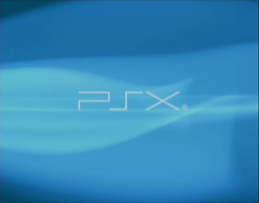PlayStation
Jump to navigation
Jump to search
Editions by mr3urious, Wyraachur, KirbyGuy2001, and zman1997
1st Logo
(December 3, 1994-March 1, 2005 [last game], March 23, 2006 [end of production], December 3, 2018-)
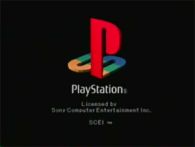
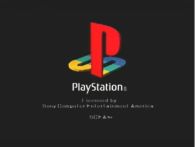
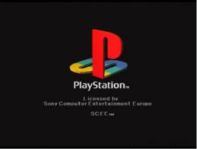
<embed height="150" src="http://wikifoundrytools.com/wiki/closinglogos/widget/youtubevideo/434cce3f5084bd599ab6769ec699b8066abfaf12" type="application/x-shockwave-flash" width="186" wmode="transparent"/><embed height="148" src="http://wikifoundrytools.com/wiki/closinglogos/widget/youtubevideo/2da2dfbe14ea654ea0bcb24959c999ca10a20283" type="application/x-shockwave-flash" width="180" wmode="transparent"/>
Logo: On a black background, we fade into the PlayStation logo, consisting of a giant red "P" turned clockwise over a teal-blue-yellow striped "S" which is striped horizontally. The "S"is shown lying down over the word "PlayStation" in a computerized futuristic font in white. Below that, we see "Licensed by" in white over "Sony Computer Entertainment Inc.", which is over "SCEI", both in white.
Variants:
FX/SFX: The fading in of the PS logo followed by the byline appearing after the PS logo appears, concluding with the PlayStation logo fading in. Otherwise, none.
Music/Sounds: A synthesized whoosh (which is actually a reversed and slowed-down sound of the smashing glass), followed by a real fast chime arpeggio, then five synth-flute notes (which is actually one single chime slowed down). When played on a PlayStation/PSone with a disc inserted when the power has been turned on, the audio from the first Sony Computer Entertainment logo can be heard fading out over this logo; this doesn't happen when a disc is booted up from the menu or on a PlayStation 2 or 3.
Music/Sounds Variants:
Availability: Introduced in Japan on December 3, 1994, in North America on September 9, 1995, in Europe on September 29, 1995 and in Oceania on November 15, 1995. This appears after the first Sony Computer Entertainment logo when you turn a PS/PSone machine on with a PSX disc inside, but it also comes after the second SCE logo if you have a PSX disc inside a PS2 when that console is turned on. It is also seen on the PSP after you select a game from the system's boot menu (in the "PlayStation Network" section). You also see this after the fourth and fifth SCE logo when a PSX disc is inside a PS3 when that console is turned on.Strangely enough, on very early Japan-region PlayStation consoles, if an NTSC-U or PAL region game is booted up on the system (either by swap trick or modification chip), it will actually skip this logo animation entirely, instead loading the game straight from either the first Sony Computer Entertainment logo (if booted from the moment the power is switched on) or from the menu screen (if booted from the menu). The logo once again makes an appearance on the Playstation Classic, released in 2018. Rare for the "Personified Fear" variant, this only happens if the PS1 is having issues reading the disc. Extremely rare for "Fearful Harmony"/"Callous Venture", this may happen if your PS1 is modchipped and is trying to read a foreign disc.
Editor's Note: Depending on the variant:
2nd Logo
(March 4, 2000-January 4, 2013 (end of production), November 8, 2013 (last game))
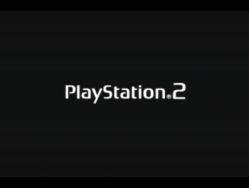 Logo: On a black background, we see "PlayStation 2", in the same font as "PlayStation" in the first logo, appear via a blue dust gathering effect. The "PS" symbol is nowhere to be found.
Logo: On a black background, we see "PlayStation 2", in the same font as "PlayStation" in the first logo, appear via a blue dust gathering effect. The "PS" symbol is nowhere to be found.
Music/Sounds Trivia: The short synth humming sound had a Hollywood appearance in the Universal 2006 film The Break-Up.
Availability: Introduced in Japan on March 4, 2000, in North America on October 26, 2000, in Europe on November 24, 2000 and in Oceania on November 30, 2000. Comes after the second SCE logo when you turn a PS2 machine on with a PS2 disc inside. Also seen after the fourth and fifth SCE logo when a PS2 disc is inside a backwards compatible PS3. The PSBBN variant is only available in Japan without using a hacked copy, which this variant might not appear.
Editor's Note: None.
3rd Logo
1st Logo
(December 3, 1994-March 1, 2005 [last game], March 23, 2006 [end of production], December 3, 2018-)



<embed height="150" src="http://wikifoundrytools.com/wiki/closinglogos/widget/youtubevideo/434cce3f5084bd599ab6769ec699b8066abfaf12" type="application/x-shockwave-flash" width="186" wmode="transparent"/><embed height="148" src="http://wikifoundrytools.com/wiki/closinglogos/widget/youtubevideo/2da2dfbe14ea654ea0bcb24959c999ca10a20283" type="application/x-shockwave-flash" width="180" wmode="transparent"/>
Logo: On a black background, we fade into the PlayStation logo, consisting of a giant red "P" turned clockwise over a teal-blue-yellow striped "S" which is striped horizontally. The "S"is shown lying down over the word "PlayStation" in a computerized futuristic font in white. Below that, we see "Licensed by" in white over "Sony Computer Entertainment Inc.", which is over "SCEI", both in white.
Variants:
- As you'd probably guess, the copyright changes depending on the region the game was released in. For example, the byline mentioned is for use on NTSC-J PlayStation games, but PAL (European) games have "Sony Computer Entertainment Europe" and "SCEE", while NTSC-U/C (North American) games use "Sony Computer Entertainment America" and "SCEA". Multi-regional consoles (such as developer units) have no "SCEI/SCEA/SCEE" identifier.
- There are earlier variants of the PAL and NTSC-U/C variants respectively. The variation is in the byline; on PAL games from 1995 to early 1996, the "Europe" is in brackets/parentheses, while on NTSC-U/C games from 1995 to 1996, the byline says "Sony Computer Entertainment of America". Starting in 1996, the "of" is removed.
- On pretty much all the original PlayStation consoles released outside of Japan, when the above logo appears, a TM sign appears next to "PlayStation". On the Japanese consoles, the PSone, PlayStation 2 and PlayStation 3, a registered trademark sign appears next to the "PlayStation" logo.
- On some games, the logo cuts off while the PlayStation sound can still be heard fading out.
- Some games have the logo actually fading out rather than cutting to black.
- Some games have the logo cutting straight to the first visual of the game, with no blank screen in between. This happens on the PAL version of TOCA Touring Car Championship (where it cuts straight to the piracy warning) and KKND: Krossfire (where it cuts straight to the copyright screen), among others.
- When the Fearful Harmony plays (only on Playstation consoles with added modchips), the SCEI logo plays as usual, but a deformed version of said logo combined with an even more deformed version of the Playstation logo appear on a black background, along with a jumble of letters.
FX/SFX: The fading in of the PS logo followed by the byline appearing after the PS logo appears, concluding with the PlayStation logo fading in. Otherwise, none.
Music/Sounds: A synthesized whoosh (which is actually a reversed and slowed-down sound of the smashing glass), followed by a real fast chime arpeggio, then five synth-flute notes (which is actually one single chime slowed down). When played on a PlayStation/PSone with a disc inserted when the power has been turned on, the audio from the first Sony Computer Entertainment logo can be heard fading out over this logo; this doesn't happen when a disc is booted up from the menu or on a PlayStation 2 or 3.
Music/Sounds Variants:
- On some games, the sound cuts off abruptly at the last note, with either the logo doing so at the same time, shortly after the sound has cut off, or shortly before the sound cuts off.
- Sometimes, the sound will enter a glitched loop, usually on the last note of the PlayStation sound. A few examples of this happening are Wipeout, Wipeout 2097 (WipeoutXL in North America), Gran Turismo, Formula 1, Formula 1 '97 (and the latter game's Championship Edition), Medal of Honor (1999), Medal of Honor: Underground,Grand Theft Auto, Grand Theft Auto 2 (worded as "GTA2"), Destruction Derby RAW, some (if not all 5) of the Namco Museum volumes (Volume 2 is one of them that has this strange glitch), Ridge Racer (the 1994 arcade game, released for the PlayStation in Japan and North America on the same dates the said console launched in the said countries but the console came out on different dates in the countries; see below) and countless other titles, PAL region demo discs from before late 1997/early 1998 and a few NTSC-U/C demo discs, with its audibility depending on how quickly the game loads.
- On rare occasions, if you put in a damaged or dirty disc, sometimes you will get a blank screen along with a much more jarring version of the PlayStation sound (nicknamed "Personified Fear"). The synthesized whoosh comes in looped (causing the whoosh to sound more heavy) and the chime sound and the five synth-flute notes are replaced with a slightly different synth-flute note sequence that is higher-pitched (this is actually the same chime sound as normal except sped up slightly). Only reported to happen on the PlayStation and PSone (if this was done on the PlayStation 2, you will get the screen saying "Please insert a PlayStation or PlayStation 2 format disc" instead). This can also happen when you insert a pirated CD-format PlayStation 2 game into the PlayStation or PSone.
- There are also two other error sounds: one of them is the normal sound but without the chimes and the other is the chimes playing slowly. These variants are nicknamed "Callous Venture" and "Fearful Harmony", respectively. This happens when you install a certain mod-chip into the console.
Availability: Introduced in Japan on December 3, 1994, in North America on September 9, 1995, in Europe on September 29, 1995 and in Oceania on November 15, 1995. This appears after the first Sony Computer Entertainment logo when you turn a PS/PSone machine on with a PSX disc inside, but it also comes after the second SCE logo if you have a PSX disc inside a PS2 when that console is turned on. It is also seen on the PSP after you select a game from the system's boot menu (in the "PlayStation Network" section). You also see this after the fourth and fifth SCE logo when a PSX disc is inside a PS3 when that console is turned on.Strangely enough, on very early Japan-region PlayStation consoles, if an NTSC-U or PAL region game is booted up on the system (either by swap trick or modification chip), it will actually skip this logo animation entirely, instead loading the game straight from either the first Sony Computer Entertainment logo (if booted from the moment the power is switched on) or from the menu screen (if booted from the menu). The logo once again makes an appearance on the Playstation Classic, released in 2018. Rare for the "Personified Fear" variant, this only happens if the PS1 is having issues reading the disc. Extremely rare for "Fearful Harmony"/"Callous Venture", this may happen if your PS1 is modchipped and is trying to read a foreign disc.
Editor's Note: Depending on the variant:
- Original Version: This logo is known for its ominousmusic and startling fade-ins. However, this is a favorite of many.
- "Callous Venture"/"Fearful Harmony": The chime-less PlayStation sound may not be that bad (if not a bit strange), but then the chimes chillingly play slowly one-by-one about a minute later, which can be quite unnerving. The deformed PlayStation/SCEI logo while this is happening can add to the scare factor.
- "Personified Fear": The blank screen along with a tense version of the PlayStation sound can unnerve many people when they're not expecting it.
2nd Logo
(March 4, 2000-January 4, 2013 (end of production), November 8, 2013 (last game))
 Logo: On a black background, we see "PlayStation 2", in the same font as "PlayStation" in the first logo, appear via a blue dust gathering effect. The "PS" symbol is nowhere to be found.
Logo: On a black background, we see "PlayStation 2", in the same font as "PlayStation" in the first logo, appear via a blue dust gathering effect. The "PS" symbol is nowhere to be found.Variant: When the PS2 has a hard drive with the Japan-only PlayStation Broadband Navigator, the logo simply fades in and out.
FX/SFX: The logo appearing.
Music/Sounds: A short synth humming sound. On the PSBBN variant, there is no sound.
FX/SFX: The logo appearing.
Music/Sounds: A short synth humming sound. On the PSBBN variant, there is no sound.
Availability: Introduced in Japan on March 4, 2000, in North America on October 26, 2000, in Europe on November 24, 2000 and in Oceania on November 30, 2000. Comes after the second SCE logo when you turn a PS2 machine on with a PS2 disc inside. Also seen after the fourth and fifth SCE logo when a PS2 disc is inside a backwards compatible PS3. The PSBBN variant is only available in Japan without using a hacked copy, which this variant might not appear.
Editor's Note: None.
3rd Logo
(December 13, 2003-February 2005)
Logo: It's just "PSX" in a futuristic font (same one used in the PS2 logo) fading in on an abstract blue background.
FX/SFX: The fade.
Music/Sounds: Dreamy synthesized music.
Availability: Extremely rare. Appears when a PSX console is booted, which is widely known as one of the rarest consoles out there due to its high price (costing US$650.05/JP¥79,800!), resulting in poor sales, meaning the PSX was never released outside of Japan. If you have a PSX though, you're downright lucky.
Editor's Note: Its jingle and fade-ins will startle some.
4th Logo
(December 12, 2004-December 2014 [end of production])
Note: A high-quality audio-only file of the logo can be heard <a href="https://instaud.io/private/1dece944a5c4c7d13f37c485da2517facd83d3f2" target="_self">here</a>.
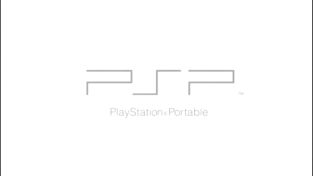 Logo: The lava lamp background from the third Sony Computer Entertainment logo wipes away, with the PSP logo, consisting of the letters "PSP" in a futuristic font, the same one used in the PS2 logo, with "PlayStation Portable", in the "PlayStation" font, under the letters against a white background, appears via a rainbow light shine effect.
Logo: The lava lamp background from the third Sony Computer Entertainment logo wipes away, with the PSP logo, consisting of the letters "PSP" in a futuristic font, the same one used in the PS2 logo, with "PlayStation Portable", in the "PlayStation" font, under the letters against a white background, appears via a rainbow light shine effect.
Variants: On firmwares below 1.50, the logo only consists of a "PSP" logo, slightly smaller and a darker shade of grey than the version seen on later firmwares.
Note: A high-quality audio-only file of the logo can be heard <a href="https://instaud.io/private/1dece944a5c4c7d13f37c485da2517facd83d3f2" target="_self">here</a>.
 Logo: The lava lamp background from the third Sony Computer Entertainment logo wipes away, with the PSP logo, consisting of the letters "PSP" in a futuristic font, the same one used in the PS2 logo, with "PlayStation Portable", in the "PlayStation" font, under the letters against a white background, appears via a rainbow light shine effect.
Logo: The lava lamp background from the third Sony Computer Entertainment logo wipes away, with the PSP logo, consisting of the letters "PSP" in a futuristic font, the same one used in the PS2 logo, with "PlayStation Portable", in the "PlayStation" font, under the letters against a white background, appears via a rainbow light shine effect.Variants: On firmwares below 1.50, the logo only consists of a "PSP" logo, slightly smaller and a darker shade of grey than the version seen on later firmwares.
FX/SFX: The lava lamp background wiping away, and the rainbow shine.
Music/Sounds: A synth guitar note accompanied with a synth whistle, which sounds sort of muffled.
Availability: Introduced in Japan on December 12, 2004, in North America on March 24, 2005, and in Europe and Oceania on September 1, 2005. Logo appears when a game is selected, either from a UMD or a Memory Stick.
Editor's Note: The logo coming out of nowhere, along with the music, may be startling.
5th Logo
(November 11, 2006-September 1, 2009)
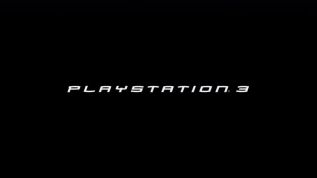 Logo: Against a black background, we see the letters "PLAYSTATION 3" in the same font used in the Spider-Man films, appear in then disappear quickly.
Logo: Against a black background, we see the letters "PLAYSTATION 3" in the same font used in the Spider-Man films, appear in then disappear quickly.
FX/SFX: The logo appearing and disappearing.
Music/Sounds: A single synth chime sound.
Availability: Introduced in Japan on November 11, 2006, in North America on November 17, 2006, and in Europe and Oceania on March 16, 2007. Appears when you start up a PS3 game, after the fourth SCE logo. As with the PSP if there's more than one game on the XMB, it'll only appear after you select a game. Although as of the September 1, 2009 PS3 update, and the introduction of the new PS3 logo, this no longer appears when you start a PS3 game.
Editor's Note: Because of the chime that may catch you off-guard, it is considered ominous. But harmless if you are used to it.
6th Logo
(September 1, 2009-May 29, 2017 [end of production])
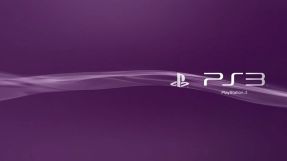 Logo: Same as the 5th Sony Computer Entertainment logo, except "Sony Computer Entertainment" has been replaced by the PlayStation Family logo, "PS3," and the text "PlayStation 3" below it.It's followed with a health warning.
Logo: Same as the 5th Sony Computer Entertainment logo, except "Sony Computer Entertainment" has been replaced by the PlayStation Family logo, "PS3," and the text "PlayStation 3" below it.It's followed with a health warning.
Music/Sounds: A synth guitar note accompanied with a synth whistle, which sounds sort of muffled.
Availability: Introduced in Japan on December 12, 2004, in North America on March 24, 2005, and in Europe and Oceania on September 1, 2005. Logo appears when a game is selected, either from a UMD or a Memory Stick.
Editor's Note: The logo coming out of nowhere, along with the music, may be startling.
5th Logo
(November 11, 2006-September 1, 2009)
 Logo: Against a black background, we see the letters "PLAYSTATION 3" in the same font used in the Spider-Man films, appear in then disappear quickly.
Logo: Against a black background, we see the letters "PLAYSTATION 3" in the same font used in the Spider-Man films, appear in then disappear quickly.FX/SFX: The logo appearing and disappearing.
Music/Sounds: A single synth chime sound.
Availability: Introduced in Japan on November 11, 2006, in North America on November 17, 2006, and in Europe and Oceania on March 16, 2007. Appears when you start up a PS3 game, after the fourth SCE logo. As with the PSP if there's more than one game on the XMB, it'll only appear after you select a game. Although as of the September 1, 2009 PS3 update, and the introduction of the new PS3 logo, this no longer appears when you start a PS3 game.
Editor's Note: Because of the chime that may catch you off-guard, it is considered ominous. But harmless if you are used to it.
6th Logo
(September 1, 2009-May 29, 2017 [end of production])
 Logo: Same as the 5th Sony Computer Entertainment logo, except "Sony Computer Entertainment" has been replaced by the PlayStation Family logo, "PS3," and the text "PlayStation 3" below it.It's followed with a health warning.
Logo: Same as the 5th Sony Computer Entertainment logo, except "Sony Computer Entertainment" has been replaced by the PlayStation Family logo, "PS3," and the text "PlayStation 3" below it.It's followed with a health warning.Variants: The logo for it's release in pre-2009, the background is colored purple. In it's release in post-2009, the background is colored blue.
FX/SFX: Same as the 5th Sony Computer Entertainment logo.
Music/Sounds: Similar the 5th Sony Computer Entertainment logo, but slightly different.
Availability: Appears when you turn on a new PlayStation 3 (Update 3.00+).
Editor's Note: Same as the 5th Sony Computer Entertainment logo.
7th Logo
(February 12, 2012- )
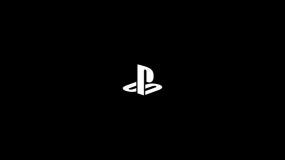 Logo: We just see the white PlayStation logo on a black screen.
Logo: We just see the white PlayStation logo on a black screen.
FX/SFX/Cheesy Factor: A boring still logo.
Music/Sounds: None.
Availability: Appears when you turn on a PS Vita or PS4. It and the Sony "Make Believe" logo that follows appear before the 6th SCE logo on the Vita when you turn it on for the first time.
Editor's Note: It's just a boring logo.
8th Logo
(November 15, 2013- )
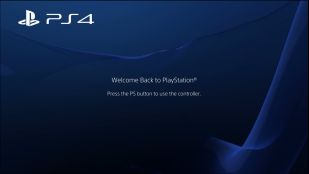 Logo: We start with the logo above then we see a health warning (reading "See important health and safety warnings in the Settings menu"), and finally, on a light-blue wave background similar to the PS3, the PS4 logo in the upper left corner. In the middle is text telling you to press the PS Button (reading "Welcome Back to PlayStation®" and "Press the PS button to use the controller.").
Logo: We start with the logo above then we see a health warning (reading "See important health and safety warnings in the Settings menu"), and finally, on a light-blue wave background similar to the PS3, the PS4 logo in the upper left corner. In the middle is text telling you to press the PS Button (reading "Welcome Back to PlayStation®" and "Press the PS button to use the controller.").
Variant: When logging out of your user, it skips the health warning and goes directly to this screen, but without the text "Welcome Back to PlayStation®".
FX/SFX: The only real animation is the background, and that makes it boring.
Music/Sounds: A new-age synth choir that continues to play until you load up an application or a disc. The logout variant has just the PS menu music.
Availability: Seen when you turn on a PS4.
Editor's Note: Considered ominous, for the dark environment and music.
FX/SFX: Same as the 5th Sony Computer Entertainment logo.
Music/Sounds: Similar the 5th Sony Computer Entertainment logo, but slightly different.
Availability: Appears when you turn on a new PlayStation 3 (Update 3.00+).
Editor's Note: Same as the 5th Sony Computer Entertainment logo.
7th Logo
(February 12, 2012- )
 Logo: We just see the white PlayStation logo on a black screen.
Logo: We just see the white PlayStation logo on a black screen.FX/SFX/Cheesy Factor: A boring still logo.
Music/Sounds: None.
Availability: Appears when you turn on a PS Vita or PS4. It and the Sony "Make Believe" logo that follows appear before the 6th SCE logo on the Vita when you turn it on for the first time.
Editor's Note: It's just a boring logo.
8th Logo
(November 15, 2013- )
 Logo: We start with the logo above then we see a health warning (reading "See important health and safety warnings in the Settings menu"), and finally, on a light-blue wave background similar to the PS3, the PS4 logo in the upper left corner. In the middle is text telling you to press the PS Button (reading "Welcome Back to PlayStation®" and "Press the PS button to use the controller.").
Logo: We start with the logo above then we see a health warning (reading "See important health and safety warnings in the Settings menu"), and finally, on a light-blue wave background similar to the PS3, the PS4 logo in the upper left corner. In the middle is text telling you to press the PS Button (reading "Welcome Back to PlayStation®" and "Press the PS button to use the controller.").Variant: When logging out of your user, it skips the health warning and goes directly to this screen, but without the text "Welcome Back to PlayStation®".
FX/SFX: The only real animation is the background, and that makes it boring.
Music/Sounds: A new-age synth choir that continues to play until you load up an application or a disc. The logout variant has just the PS menu music.
Availability: Seen when you turn on a PS4.
Editor's Note: Considered ominous, for the dark environment and music.
